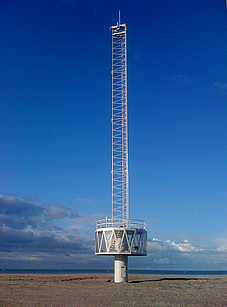Zandmotor site description
Experimental Mega nourishment on the Dutch coast
In 2011, Rijkswaterstaat and the provincial authority of Zuid-Holland created a hook-shaped peninsula of 1 by 1 km dubbed Sand Motor. The peninsula will gradually disappear and the sand will distribute itself over the surrounding coastline. If the Sand Motor fulfils its expectations, sand replenishment of the nearby coast will be unnecessary for the next 20 years.
The Sand Motor is the first experiment of its kind. With this pilot project, the Netherlands is continuing to set the standard in water management. If the Sand Motor works expected, the concept can be rolled out to other places in the Netherlands and the rest of the world.

Research & Monitoring
Scientists are studying how the Sand Motor develops to see whether this innovative method for coastal protection does indeed work. Measurement data are also needed to manage the Sand Motor properly. These include measurements by Argus cameras, wavebouys, Xband radar and regular in situ measurements on bathymetry and biology.
Argus station
One of the measurement platforms in place is a 40 meter high tower on the Sand Motor. The tower is equipped with 12 Argus camera’s supplying an almost 360 degree view of the area. A novel feature in video monitoring on coastlines is the 4 cameras oriented at the dunes. These are being used to monitor the sand transport by wind over the beaches into the dunes.
The change in shape of the Sand Motor since the installation of the Argus station is clearly visible from the plan view below (move the slider to check it out)


